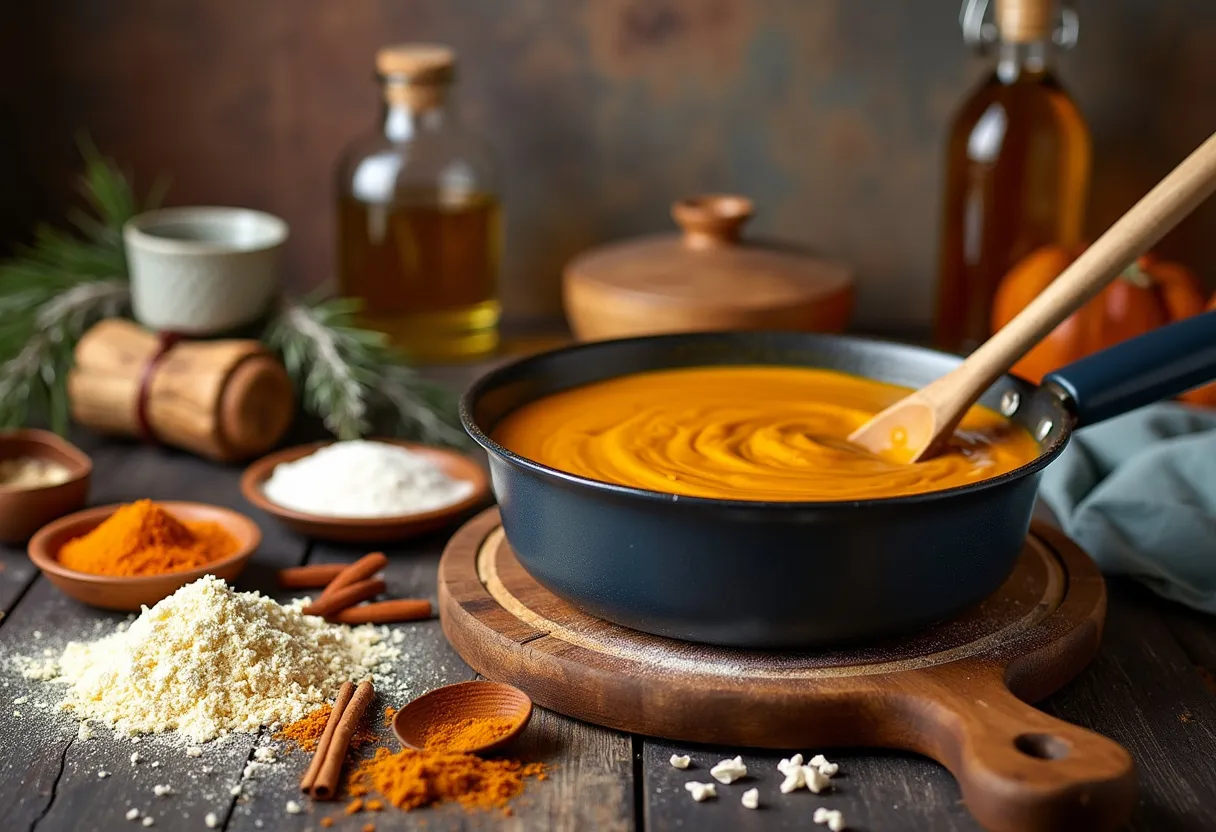
Mastering the Roux: A Comprehensive Guide to Perfecting Cajun and Creole Foundations
Published on 9/21/2024
Ethan Walker • 9/21/2024
Welcome, fellow culinarians, to the art and science of mastering the roux! As a lover of Cajun and Creole cuisine, you are likely familiar with this magic paste that forms the backbone of many traditional dishes. From gumbo to étouffée, the roux is the cornerstone ingredient that imparts depth, flavor, and a distinct texture to your culinary creations. Let's dive into this quintessential part of Southern cooking and explore how you can achieve perfection with every stir.
Understanding the Roux
A roux is an essential culinary tool for thickening and adding flavor. It is made by combining equal parts flour and fat, typically butter or oil, in a process that dates back several centuries. In Cajun and Creole cooking, the roux is cooked to varying degrees of color, each imparting a unique flavor and aroma.
The Four Stages of Roux
- White Roux: Cooked for just a few minutes, this roux is used primarily for thickening with minimal flavor addition. It's common in sauces like béchamel.
- Blond Roux: Delicate and lightly brown, this roux has a nutty aroma and is often used in soups and gravies.
- Brown Roux: With a distinct caramel color and complex flavor, this roux is a staple in Cajun cooking used in classic dishes such as jambalaya and authentic gumbo.
- Dark Roux: Reaching a rich chocolate hue, this roux brings a robust and intense depth of flavor. Handle with care, as it's easy to burn at this stage.
Crafting the Perfect Roux
Creating a perfect roux requires patience, consistency, and a keen eye. Here are the steps to guide you through the process:
Tools and Ingredients
- Cast Iron Skillet: Preferred for its even heating properties.
- Wooden Spoon: Ideal for stirring and checking texture.
- Whisk: Useful for breaking up lumps in the roux.
- Flour: All-purpose flour works well for a traditional roux.
- Butter or Oil: Choose based on the flavor profile you desire.
Instructions
- Mise en place: Gather all your ingredients and tools. Precision and preparation are key.
- Heat your skillet: Place your cast iron skillet over medium to low heat. Avoid too high a temperature to prevent scorching.
- Add your fat: Melt your chosen butter or heat the oil until shimmering.
- Incorporate the flour: Slowly add the flour to the fat, stirring continuously using your whisk or wooden spoon to ensure even blending.
- Cook to desired color: Continue stirring as the roux darkens, switching to a cooking timer for precision if needed. Your roux's color will determine the final flavor profile.
Troubleshooting and Tips
Mistakes happen, but with a few tips, your roux will be as smooth as a jazz solo in the French Quarter:
- If you see specks of black, it’s burned – start over to avoid bitterness.
- Keep stirring consistently. A roux can go from perfect to ruined quickly.
- Adjust heat as needed. If it's browning too fast, lower the temperature.
Preserving Culinary Heritage
Each time you make a roux, you are participating in a tradition that tells a story of cultural exchange, resourcefulness, and culinary evolution. Embrace it, savor it, and pass it on. By understanding and perfecting the roux, you contribute to keeping the flames of Cajun and Creole cooking alive for future generations.
For more tips and insights into Cajun and Creole cuisine, visit my blog. Happy cooking!
Ethan Walker
Senior Chef and Cultural Food Historian | I've been cooking
Ethan was born and raised in the culturally rich city of New Orleans, where food is woven into the fabric of life. His family has passed down Cajun and Creole recipes for generations, and Ethan became passionate about preserving these culinary traditions. After working in various restaurants, he eventually opened his own eatery, which became known for its authentic gumbo, jambalaya, and beignets. Now semi-retired, Ethan teaches cooking classes and writes about the history of Southern cuisine. His mission is to ensure that traditional Cajun and Creole cooking remains vibrant for future generations.